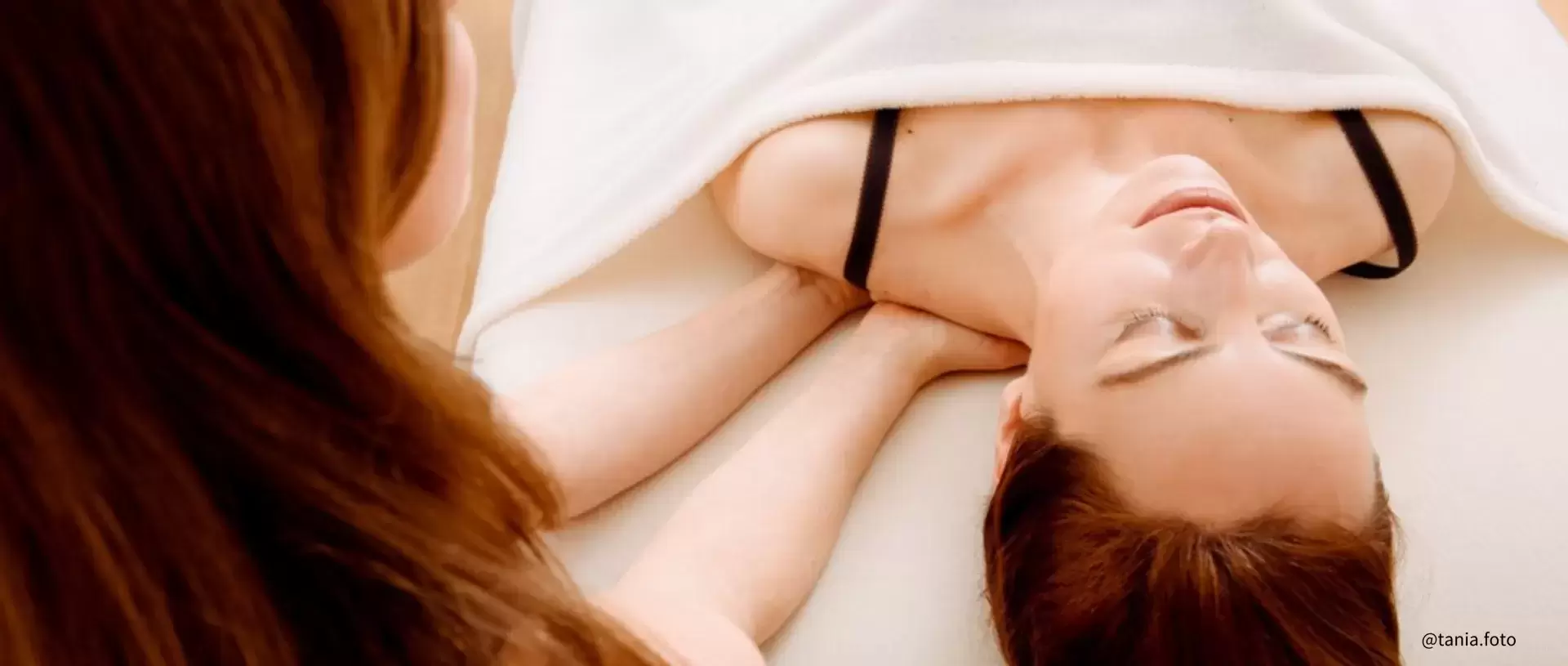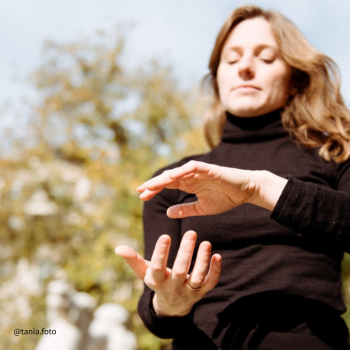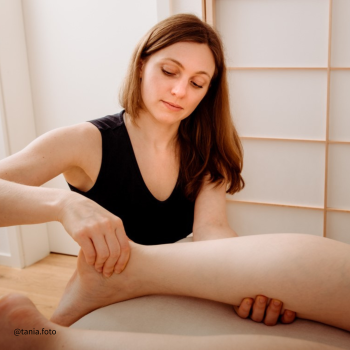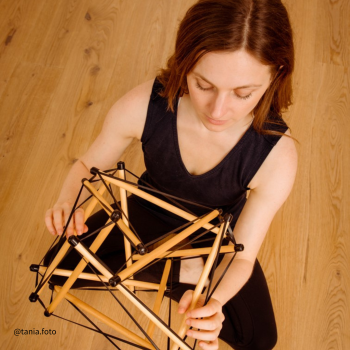By Lea Kabirschke, Certified Rolfer®
Osteopathy
A colleague of mine who works both as an osteopath and as a Rolfer® illustrates the comparison between Rolfing® and osteopathy with the tracks of a railway. The long rails are like Rolfing and the cross-ties like osteopathy.
Osteopathy and Rolfing have a lot in common, as, for example, their holistic approach.
Another common aspect is the fact that both Rolfers and Osteopaths work with the concept of the “Listening-Touch”: Practitioners perceive different layers and organ-systems of the body by sensing attentively what lies beneath their hands.
Rolfers work on myofascial structures that form certain pathways or “lines” in the body, such as the frontal line, the lateral line, the midline etc. A Rolfer often works locally and globally at the same time by establishing a relation between the local structures beneath his or her hands with the corresponding line in the body. In the end, a Rolfer is led by the inquiry how gravity can flow through the body in the most effective way. The lines in the body suggest the comparison of Rolfing with the long rails.
How can the comparison of Osteopathy with the cross-ties of railway tracks be explained? It might derive from the ability of Osteopaths to sense interconnections between organs and form-giving parts of the body. For example, they can perceive and treat subtle intrinsic movements of organs and fluids in relation to other layers in the body. Visceral manipulation wasn’t part of the original Rolfing protocol, although Ida Rolf might have had an understanding of the importance of the viscera for people’s posture. To a certain degree, she included visceral work into her sessions.
Today, however, visceral manipulation has become part of the Rolfing method, partly through the work and collaboration of Peter Schwind and Jean Pierre Barral. Thus, Rolfing and Osteopathy often approach the same questions with similar techniques. However, it is difficult to compare the methods, since the philosophy, the intention behind a certain technique, or the session goals may differ from one another. In my eyes, both methods complement each other.
I see a difference between Rolfers and Osteopaths in how they deal with gravity and include the concept of gravity into their treatments.
The effects of gravity on the body are a Rolfer’s main focus. For example, when he or she is working on the client’s legs, the question arises whether the legs are able to “communicate” with the back of the client. What does that mean? Does the transmission of force from the legs to the back and vice versa function well when gravity is acting on the client as for example in standing or walking? And if not, what is preventing it? I haven’t seen this approach in osteopathy so far.
Feldenkrais
Like in Rolfing, Feldenkrais practitioners include the concept of gravity into their work.
In fact, Dr. Ida Rolf and Dr. Moshe Feldenkrais knew and valued each other. They used to discuss their approaches “Structural Integration” by Ida Rolf vs. “Functional Integration” by Moshe Feldenkrais.
Feldenkrais achieved good results in improving body awareness through movement. Ida Rolf first dedicated time to align the body structurally in space before focusing on the movement. Both ways lead to the desired result. In fact, Rolfing also includes Rolf Movement sessions, which create awareness and integration through movement just like Feldenkrais does. The movement principles are also part of the traditional Rolfing sessions.
Rolfing and Feldenkrais have many similarities. Therefore, some Rolfers are also Feldenkrais teachers. The decision for one or the other method in that case depends on personal preference or the individual movement background. Put in simple terms, Feldenkrais focuses on “movement” versus Rolfing focuses on “structure”. Nevertheless, it is difficult for me to point out differences between the methods. The following quote of Moshe Feldenkrais in a letter to Ida Rolf in 1976 illustrates that:
"Structural Integration and Functional Integration have more in common than the word that connects them. Indeed, in the case of humans, structure and function are meaningless, one without the other; so that when you integrate structure, as nobody else can, you improve functioning.” –Moshe Feldenkrais
Physiotherapy
The strengths of Physiotherapy lie in the treatment of acute pain and in the follow-up care after accidents or surgeries.
A doctor’s prescription usually has the advantage of full or at least partial cost coverage by health insurance companies. The other side of the coin, however, is the fact that the prescribed treatment periods for a session seem to be too short, especially for patients covered by statutory insurance.
Physiotherapists are bound by the instructions of the treating physicians. This often results in the problem that Physiotherapists, given the short treatment periods, possibly don’t get the chance to consider the larger context of a patient’s structural habits. Nevertheless, Physiotherapists can make significant differences in pain management and recovery, and give useful instructions for functional and healthy movement.
Rolfing considers the body as “Tensegrity Structure”
In the term “tensegrity” the two words “tension” and “integrity” are combined. Tensegrity describes a system of compressed components (usually bars) within a network of chords that are under continuous tension. The integrity of a construction is balanced between tension and compression, so the components do not touch each other but rather float within the network of tension.
The artist Kenneth Snelson had the original idea of floating compression. The architect Richard Buckminster Fuller built tensegrity constructions and coined the word “tensegrity” in the 1960s. Tensegrity structures serve as a model for the human body and offer a new perspective:
The skeleton is no longer conceived as a stable structure with muscles being attached. Instead, the whole body is seen as a three-dimensional network under tension in which the bones of the skeleton seem to float freely.
If we no longer compare the body with a solid house built with the “brick on brick” method, where the head rests on the torso, the torso rests on the pelvis, the pelvis rests on top of the legs etc. but, instead, comprehending the body as tensegrity structure, many characteristics of the body can be explained, such as plasticity, resilience, adaptability and connectivity. Even though the tensegrity model serves well as model, the human body is, of course, far more complex than that.
A person’s body maintains its inner cohesion even when the person is hanging from a branch or performing a headstand. Due to the inner balance of tension and compression tensegrity structures maintain their shape no matter how they are oriented, whereas a house that is turned upside down would lose its shape and function.
Let’s compare the floating components in a tensegrity model with the bones in the body and the elastic chords with the connective tissue. Any pressure on a bone or tension on a ligament would be distributed evenly over the whole structure. A local injury can have a global effect in the whole body. For example, a whiplash injury can be a problem for the neck for a few days. Then it can shift and become a problem for the spine for weeks and eventually affect the whole body. Only treating the neck wouldn’t be the best approach.
Rolfing takes the whole body into account, by working on the causes of pain, discomfort or movement restrictions, as well as on compensating patterns or habits.
In many cases, the focus of a Rolfer is not directly on the pain, but on the alignment of the body in the gravitational field. Pain often disappears by itself in the cause of the sessions once the body finds a better alignment in space, regains mobility, resilience and elasticity. Rolfing is right for you if you want to dive deeper into understanding your body, if you are not just looking for pain relief but if you are curious about the human potential.
Rolfing offers a unique approach for regaining freedom of movement
It is a way to perceive the body as something pleasurable. I consider it important to understand the method and to keep its originality, so the essence of what Ida Rolf created doesn’t get lost. The same applies to Osteopathy, Feldenkrais or Physiotherapy. Furthermore, one should not forget, that the methods have certain similarities. They can complement and inspire each other. The interconnection and combination of the methods allows something new to arise. Thereby, playfulness and novelty open new perspectives.
In my practice for example, I experiment with Rolfing techniques while my clients are moving. This works especially well with exercises performed on the so called Gyrotonic equipment. In doing so, I still respect the principles of both methods. I will share my findings about that in a separate article.
In the end, it is about movement itself. In general, we move far too less in our daily life. Regardless of whether we choose Osteopathy, Feldenkrais, Physiotherapy, Gyrotonic or combinations, it is about experiencing the body and using it in a way that you can enjoy life.
Rolfing left the greatest impression on me. It is my way. It’s a way that seems to work for many other people as well. Rolfing is worth discovering.
Author: Certified Rolfer®, Lea Kabirschke - Germany
Source: https://www.functional-training-magazin.de/das-tensegrity-modell/
Photo Credit: Tania Schmid @tania.foto
Visit Lea Kabirschke’s website to view the original blogpost.










